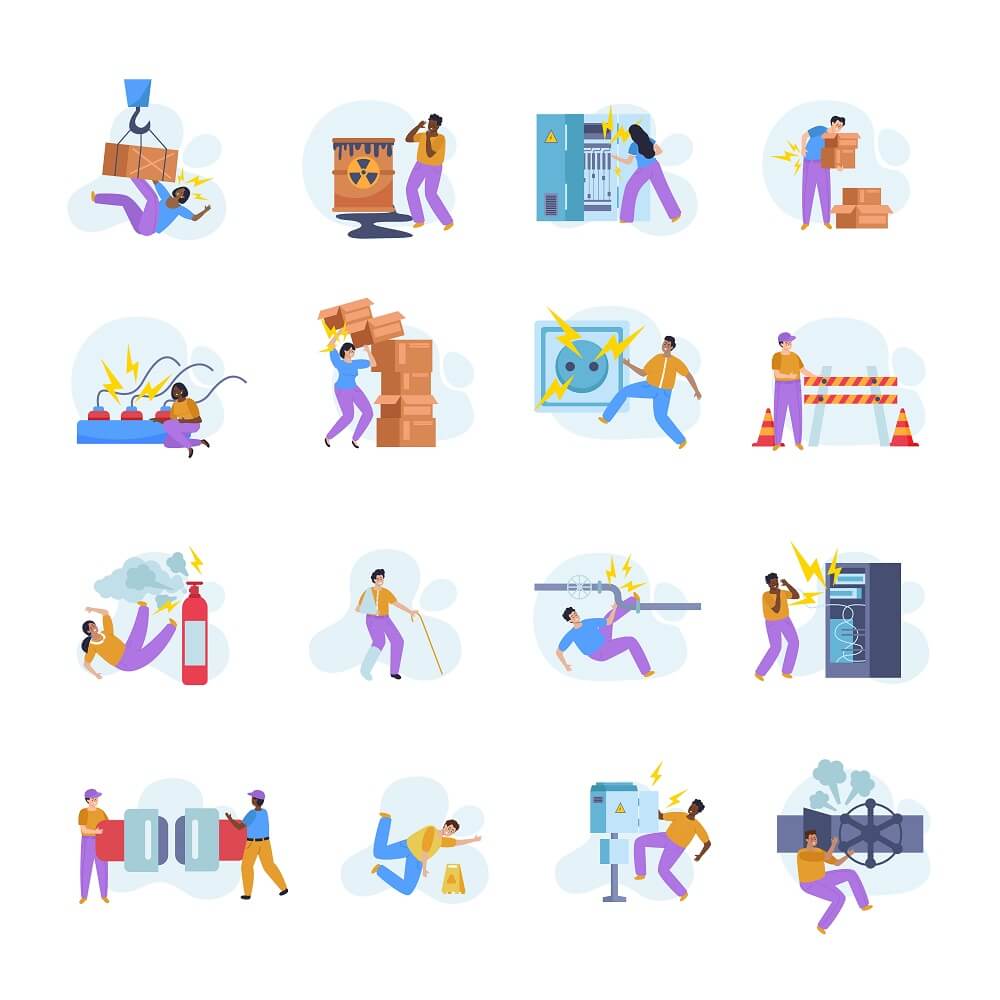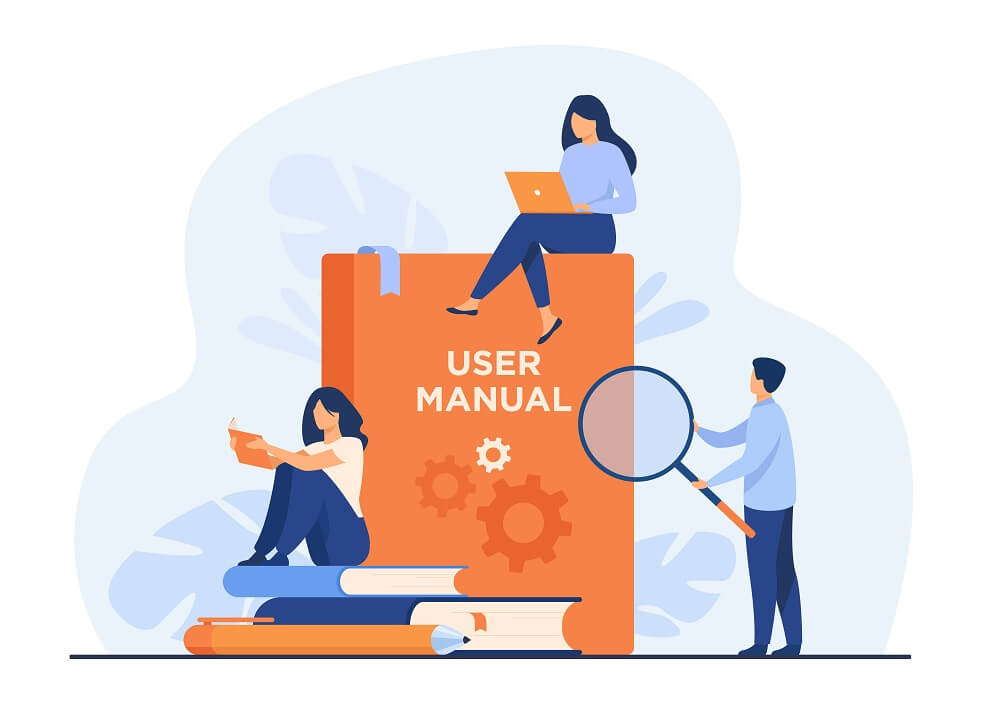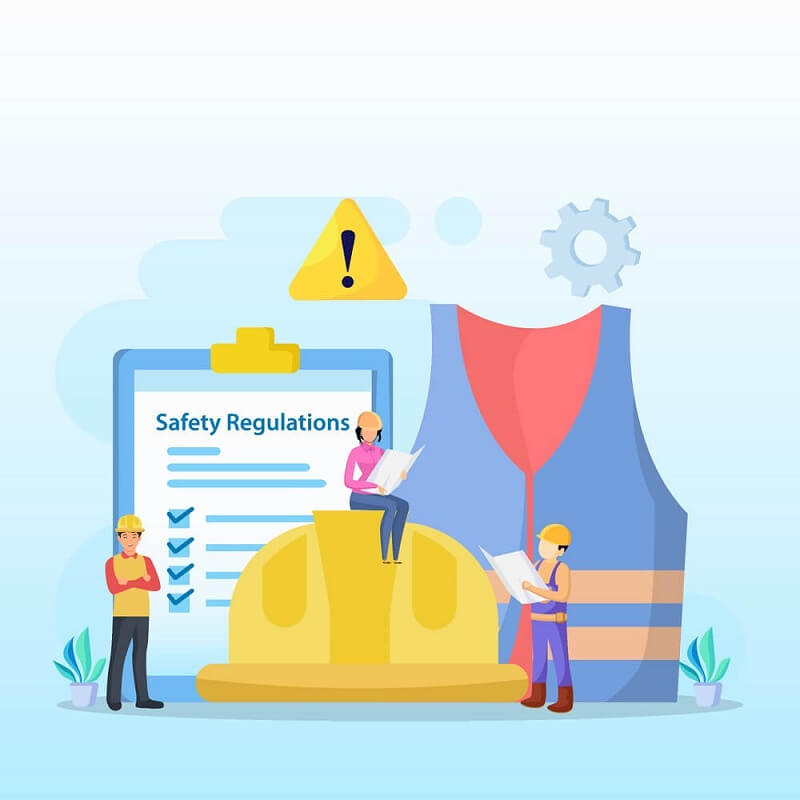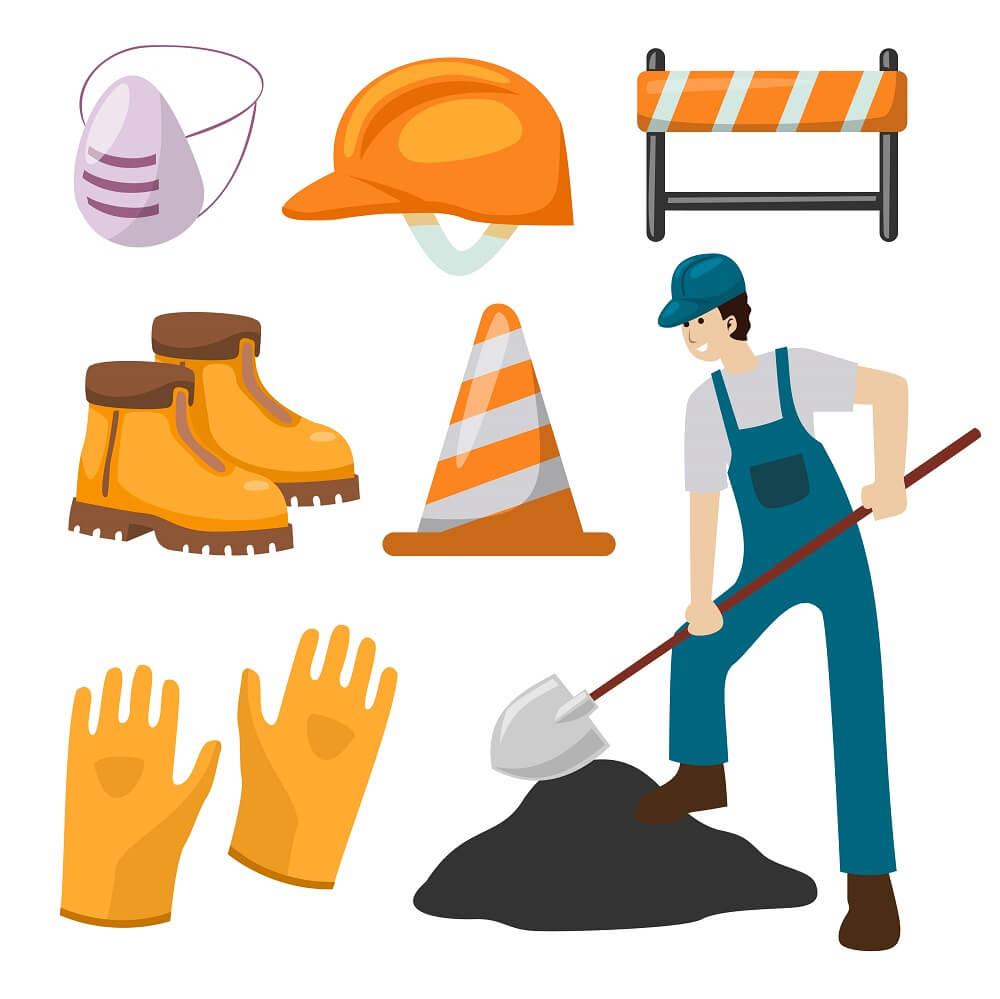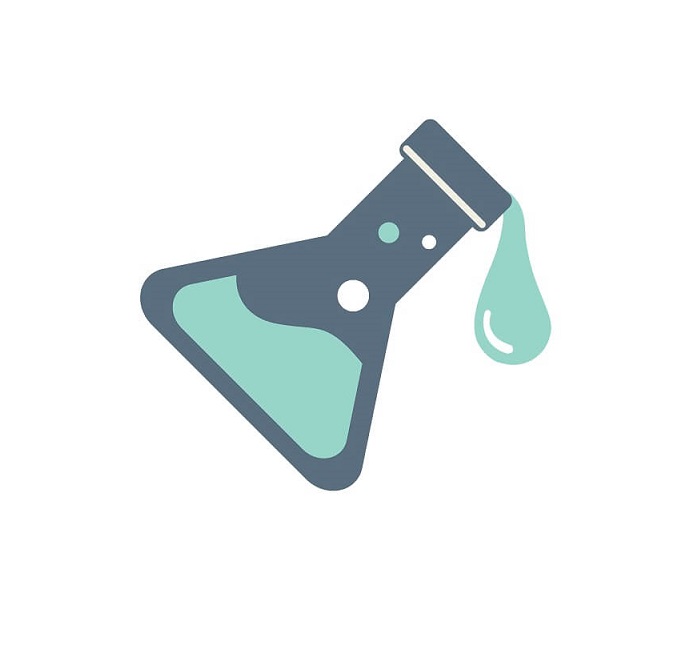- Use products that your company has approved.
- Avoid combining substances.
- Do not pour out chemicals if containers are improperly labelled.
Don’t use it if the label is gone (or if there is no label). Instead, you should inform your manager. And an assigned person should remove the product.
- Maintain product separation.
- Don’t utilise substances for unintended purposes.
- Use the proper tools and Personal Protective Equipment (PPE).
- Organise material safety data sheets.
- Add chemicals to the water. Don’t add water to chemicals. It prevents foam build-up and splashback.
- Always adhere to the manufacturer’s guidelines.
- Keep substance use as exact as instructed, neither more nor less.
How to Conduct COSHH Risk Assessment?
A COSHH risk assessment focuses on the dangers and risks posed by substances in the workplace. Learn more about Risk Assessment in our COSHH (Control of Substances Hazardous to Health) Training Course.
Analyse the Potential Health Risks
Identify the hazardous compounds present in your workplace. In addition, consider the health concerns that these substances pose to estimate the risks.
Determine the Precautions
Your control systems should be functional and efficient. So, consider how a substance may be absorbed. Ingested? Inhaled? Or absorbed via the skin?
If you identify hazards, take steps to protect the health of others.
Eliminate or Properly Manage Exposure
Your COSHH responsibilities are to prevent exposure to hazardous substances. If prevention is not possible, limit the exposure. In addition, alter the procedure or activity if it’s possible. You can replace a substance with a more secure option. For example, you may use it in a less hazardous form, such as pellets rather than powder. Also, you can limit employee exposure at the source, such as at the local exhaust ventilation. Finally, offer PPEs as the last resort.
Employ Exposure Standards for the Workplace
You must set an Occupational Exposure Standard (OES). To comply with an OES for substances, you should reduce exposure. Use Maximum Exposure Limits (MELs).
There are substances with the potential to have the worst health impacts. Health impacts can be cancer and occupational asthma. When you cannot determine an OES for such substances, set MELs for them. In addition, restrict exposure to substances with MELs as much as possible. In any event, keep the exposure below the MEL.
Your workers also have COSHH responsibilities. They should be responsible when utilising the controls. In addition, they must report flaws. Also, keep an eye on how often exposures happen.
Plans and Emergencies
Suppose, the control mechanism failed. Now, your assessment indicates that there are significant health hazards. In addition, the concentration of hazardous substances in the air is high. How will you handle it?
The answer is – you must prepare your response to a hazardous substance emergency in advance. COSHH responsibilities of your employees require appropriate and sufficient information, instruction, and training. Advanced emergency planning must include the following things.
- The names of any substances they work with or could be exposed to.
- The risks posed by such exposure.
- Access to any safety data sheets that apply to those substances.
- The key findings of your risk assessment.
- The precautions they should take.
- Instructions on how to use PPE and clothing.
What are the COSHH Control Measures?
Specific controls work better than others. Here are seven important COSHH control measures in order of importance.
1. Exclusion
Altering a process to stop chemical use may be necessary for the exclusion. While it sounds like a lot of work, the benefit is that COSHH responsibilities will no longer be applicable because there are no dangerous materials.
2. Swap
In this case, you are minimising the risk rather than eradicating it. Change it to a less dangerous option. For example, make the substance safer by changing its form. With thousands of products readily available, a review of several vendors frequently yields lower-risk substitutes.
3. Alter Processes
The way you work can reveal COSHH issues if you review it properly. For instance, it might be a routine procedure for workers to sweep up when their shift is over. Doing this might lead to settled dust re-entering the atmosphere. Switch to moist cloths or dampen the surfaces before sweeping or cleaning up. It will help reduce dust and make everyone’s workplace safer and healthier.
4. Technical Controls
Technical controls entail the development of exposure control systems and work tools, ideally at the source. Therefore, it can prevent or significantly reduce exposure to a safe level. Use technical controls to enclose the process and keep the hazardous substance inside the enclosure. These restrictions could consist of the following things.
- Segmentation of workers
- Ventilation with local exhaust
- General ventilation
- Dilution
5. Monitoring Mechanisms
As an employer, you are responsible for regularly monitoring, checking, and supervising the COSHH control measures. In addition, put regulations that limit exposure to a safe amount. These monitoring mechanisms could consist of the following things.
- Reduced exposure time.
- Clear restrictions.
- Proper guidelines.
Along with technical controls, you need to enforce monitoring mechanisms.
COSHH Regulations and COSHH Legislation
Employers are required under the COSHH regulations to recognise and control substance-related risks and hazards in the workplace. Additional COSHH-related laws and regulations are as follows.
COSHH and REACH
Registration, Evaluation, Authorisation, and Restriction of Chemicals, or REACH is a regulation of the European Union. It went into effect on June 1st, 2007. A risk assessment by both COSHH and REACH is essential. Through REACH, chemical makers and importers can communicate with the rest of the supply chain about hazards and safety.
COSHH and RIDDOR
While COSHH focuses on controlling hazardous substances, Reporting of Injuries, Diseases, and Dangerous Occurrences Regulations 2013 (RIDDOR) offers legislation for reporting events. Both collaborate to ensure the health and safety of everyone accessing the workplace. Safety is a must for customers, clients, and other visitors.
What Happens if You Don’t Follow COSHH?
The Health and Safety Executive (HSE) constantly monitors businesses for COSHH responsibilities. In addition, HSE is responsible for enforcing the COSHH Regulations. Heavy fines and legal action may follow noncompliance with the rules.
Health Risks
Employees or others may get sick or hurt if businesses don’t appropriately regulate hazardous substances. Sickness can vary from minor eye discomfort to fatal conditions like chronic lung disease.
Business Complications
Not following COSHH can cause businesses to lose productivity and credibility. In addition, the business will be subjected to enforcement action. For example, the action can be a prosecution under the COSHH Regulations or civil claims from employees.
Also, employees may not strictly abide by the safety controls. For example, they do not abide by proper PPE rules. Or, they disobey safety training and instructions. Such employees are also subjected to disciplinary action by their employer, including possible dismissal.
Legal Repercussions
The employee will face legal action and fines for noncompliance and big violations. In addition, for violations of COSHH and other health and safety laws, people may face prison terms of up to two years in the Crown Courts and up to six months in the magistrates’ courts.

 Food Hygiene
Food Hygiene Health & Safety
Health & Safety Safeguarding
Safeguarding First Aid
First Aid Business Skills
Business Skills Personal Development
Personal Development
![What are your COSHH responsibilities [Employers & Employees]](https://trainingexpress.org.uk/wp-content/uploads/2022/12/What-are-your-COSHH-responsibilities.png)
